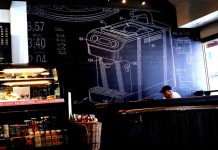This article has been written by Oishika Banerji of Amity Law School, Kolkata. This article provides a detailed analysis of trade dress in India in light of the case of Merwans Confectioners Pvt Ltd v M/s Sugar Street & Ors.
Table of Contents
Introduction
Customer preferences have shifted dramatically over the decades; today, along with product quality, the entire packaging of the product has had a big impact on consumer purchasing decisions. Packaging, colour pattern, colour combination, product shape, texture, design, graphics, and illustration, collectively known as trade dress, are protected from being exploited by third parties who wish to imitate a product’s overall appearance in order to gain profit from its established goodwill and reputation. With India walking slowly in framing trade dress legislation, it is the common law of passing off that protects trade dress, which includes the shape of items, their packaging, and colour combinations, among other things, as outlined in Section 2 (zb) of the Trademarks Act, 1999. The present case of Merwans Confectioners Pvt Ltd v M/s Sugar Street & Ors (2019) surrounds the subject matter of infringement in relation to trade dress where the Bombay High Court observed that likelihood of confusion is an important factor to determine infringement of trade dress. This article provides a detailed analysis of the aforementioned case thereby explaining the concept of trade dress with respect to India.
Growth and development of trade dress in India
Section 43(a) of the Lanham Act established the notion of trade dress for the first time in the United States. The total look of the product, including form, colour combination, size, and so on, is considered a trade dress, according to this provision. Both registered and unregistered visual representations are eligible for claiming trade dress protection. In India, trade dress is protected in the same way an unregistered trademark is protected. Passing off action against the use of identical trade dress might be pursued by the aggrieved party. In order to get relief under passing off for trade dress, the plaintiff has to prove that:
- The plaintiff’s product’s trade dress has acquired distinctiveness and established goodwill and reputation through time, allowing their product to be distinguishable from that of the competitor.
- The third-party has taken advantage of the plaintiff’s existing goodwill and reputation by using a trade dress that is deceptively similar to the plaintiff’s goods.
- Due to the identical packaging, feel, or appearance of the two items, consumers have been left confused.
By evaluating different characteristics linked to a product’s visual appearance, the Indian judiciary has acknowledged trade dress as an important part of the IP system. The issue before the Bombay High Court in the case of Pidilite Industries Limited v. Poma–Ex Products (2017) was that the defendant’s mark KWIKHEAL was responsible for infringing the plaintiff’s mark FEWIKWIK. The packaging of the two items was deceptively identical, thus there was also a matter of trade dress. The Court found that the defendant had utilized a trademark that was similar to the plaintiff’s and that the product’s packaging was likely to cause consumer confusion and therefore restrained the defendant from continuing the same.
The Delhi High Court while deciding the case of Cadbury India ltd v. Neeraj Food Products (2007), found the name ‘JAMES BOND’ to be visually similar to Cadbury’s registered brand ‘GEMS’. The packaging of Neeraj Food goods was also identical, hence it was forbidden to use it. The same Court in 2016 while deciding the case of Skechers USA Inc & Others v. Pure Play Sports had granted an ad-interim injunction against “Skechers USA Inc” to prevent “Pure Play Sports” from adopting comparable aspects of footwear that were deceptive, confusing, and deceiving the unsuspecting buyer. It was concluded that there was extensive and purposeful mimicry.
The primary goal of trade dress protection is to safeguard aspects that aid in locating a product’s originator or manufacturer. It can therefore avoid incorrect association as well as the exploitation of the original user’s goodwill and status. Firms seek to develop competitive tactics in the current market in order to show their products as distinctive in comparison to the multiplicity of alternatives available to the ordinary customer. A rise in the number of manufacturers involves the use of especially unique marks, as well as careful examination and identification of traits that may be protected under trade dress laws. The Madras High Court had observed the above views in the recent case of M/S Maya Appliances Private vs Butterfly Gandhimathi (2017).
Merwans Confectioners Pvt Ltd v M/s Sugar Street & Ors: an analysis
Under trade dress law, exclusive rights cannot be granted to a product feature whose primary impact is ornamental and aesthetic, with no source-identifying function, observed the Bombay High Court in the well-known case of Merwans Confectioners Pvt Ltd v M/s Sugar Street & Ors (2019).
Facts
The applicant started the current business in the year 1930 as a family business owned by one Mr.K.M. Irani which became popular for its freshly baked products. Mr. Merwan Irani carried on his parents’ legacy by launching the ‘Merwans’ brand in 1972, which has been in use since January 1, 1978, according to the Trade Mark Registry. The applicant adopted and became a user of the trademark ‘Merwans,’ and has been using it as an exclusive proprietor and owner of the said trademark constantly, uninterruptedly, and persistently. The applicant has earned goodwill and reputation and brand image in the said mark ‘Merwans’ since 1st January 1978 as well.
The applicant signed the first Franchise Agreement at the Andheri West Outlet in 2015 with the defendants, Sugar Street, who for this reason were allowed to adopt the mark, ‘Merwans’ distinct décor. The plaintiff had for the last four years built and developed a distinctive trade dress, which originates from and identifies with the plaintiff’s product, thereby making it distinctive. The applicant had also hired a team of architects and invested a significant amount of time and money to guarantee that the decor is one-of-a-kind, instinctual, and distinctive to the applicant. At the time of signing the Franchise Agreement, the applicant produced a sketch of the outlet’s exact layout (including furniture and fixtures, color scheme, and so on). The applicant canceled the aforementioned Franchise Agreement dated August 18, 2015, on September 9, 2019, citing various violations on the part of the defendants. The defendants had previously triggered the arbitration clause under the aforementioned Franchise Agreement via their advocate’s letter dated 13th August 2019. The Appellant then sought a permanent injunction, saying that the Defendants were infringing on Merwans’ distinctive trade dress by passing off their goods and services as Merwans’.
The issue before the Court
Whether the trade dress of the applicant is continued to be used by the defendants in the said shop while carrying on its business and if so, will there be any infringement of the mark claimed by the applicant or not?
The contention of the parties
The plaintiff’s trademark ‘Merwans’ is registered under class 43 and is thus restricted to the color depicted in the depiction until June 26, 2025. Both parties, according to the plaintiff’s attorney, are in the baking industry. They deal with things that are similar in nature. He claims that, despite the termination of the Franchise Agreement, the defendants have deceptively continued the same business at the same location with the same decor, layout, and design (i.e. trade dress distinctive, identified, and associated with the applicant only), and are thus passing off the applicant’s products while using the applicant’s trade dress. He claims that the defendants are intentionally confusing and deceiving the general public by misrepresenting the defendants’ outlet as the applicant’s. The learned counsel contends that, despite their identical nature, the defendants’ product has no relationship with the applicant, whose distinctive trade dress, reputation, and goodwill are being dishonestly used by the defendants. The applicant’s trade dress is still being used in an unlawful and deceptive manner.
On the other side, Ms. Castellino, skilled counsel for the defendants, claims that her clients have already invoked the arbitration arrangement set forth in the Franchise Agreement. In the disagreement that arose between the parties under the aforementioned Franchise Agreement, the High Court had previously appointed an arbitrator. She claims that the defendants have already returned all of the applicant’s edible saleable items and transportable proprietary materials to the applicant’s authorized agent on September 13, 2019. All of the defendants’ further equipment was obtained from generic providers who produce identical cooled-cabinets, display cabinets, and other similar devices to showcase food items in all food-selling venues, such as the defendants’ business and none of the equipment and cool-cabinets, counters, etc. were uniquely or proprietarily designed by the applicant. The Counsel further stated that all of the defendants’ electrical equipment was acquired with their own money, and none of the defendants’ electrical equipment was given by the applicant, nor was any money loaned by the applicant to the defendants to purchase that equipment. She further claims that because the defendants are the owners of the equipment and cabinets, they have the right to utilize them for their own purposes as none of the equipment or cabinets may be identified as belonging to or belonging to the applicant in any way. The learned Counsel claims that, since the termination of the Franchise Agreement, her clients have stopped dressing their employees in the uniforms that the defendants were wearing prior to the termination of the Franchise Agreement, because there are no applicant products to sell in the defendants’ shop.
The decision by the Court
After hearing the contentions raised by both the parties to the suit, the Madras High Court made the following observations:
- There is no doubt that the applicant and the defendant engaged in a Franchise Agreement, and so the contention of the applicant that the defendant has been utilizing the items given by the applicant to the defendants’ shop cannot be accepted as the defendant had restrained itself from doing the same after the Franchise Agreement was terminated. All of the items that the applicant provided to the defendants have already been returned to the applicant.
- There is no clause in the Franchise Agreement that prohibits the defendants from carrying on any business of a similar character after the termination of the said Franchise Agreement by obtaining such items from other market providers. Therefore, the plaintiff’s claim that the defendants have continued the same business at the same location with the same decor, layout, design (i.e. trade dress distinctive, identified, and associated with the applicant only) and are thus passing off the plaintiff’s products while using the plaintiff’s trade dress, causing confusion and deliberate deception to the general public who mistake the said outlet for the applicant, is unfounded.
- The defendants have acquired software from a separate provider, which is already being utilized in the store. Following the termination of the Franchise Agreement, the defendants began obtaining bakery items from another bakery firm and selling their products from the aforementioned store. Hence the defendants did not have any connection with the plaintiff’s business or products.
- Under trade dress law, exclusive rights cannot be granted to a product feature whose primary impact is ornamental and aesthetic, with no source-identifying role. The criteria for determining trade dress infringement is the possibility of misunderstanding based on the entire trade dress. The Court is not compelled to determine if there is any ambiguity or deception. Instead, the test courts must apply to determine infringement is whether there is a risk of misunderstanding or deception in the eyes of naive clients, regardless of the differences existing in the trade name.
Conclusion
The case of Merwans Confectioners Pvt Ltd v. M/s Sugar Street & Ors (2019) has been a turning point in the development of trade dress jurisprudence in India. The judgment delivered in this case has not only raised the standards for determining contravention of trade dress rights of an owner but has also promoted the need for awareness among the trade dress owners based in India.
References
- https://iprlawindia.org/a-bitter-tale-of-sweets-rivalry-merwans-confectioners-pvt-ltd-v-m-s-sugar-street-ors/.
- https://www.livelaw.in/columns/trade-dress-as-interpreted-by-the-bombay-high-court-in-the-case-of-merwans-confectioners-pvt-ltd-v-ms-sugar-street-ors-163520.
- https://lexforti.com/legal-news/the-advent-of-trade-dress-as-a-concept-law-in-india/.
- https://www.tradeindia.com/Seller-11486423-Merwans-Confectioners-Pvt-Ltd-/.
Students of Lawsikho courses regularly produce writing assignments and work on practical exercises as a part of their coursework and develop themselves in real-life practical skills.
LawSikho has created a telegram group for exchanging legal knowledge, referrals, and various opportunities. You can click on this link and join: https://t.me/joinchat/L9vr7LmS9pJjYTQ9
Follow us on Instagram and subscribe to our YouTube channel for more amazing legal content.
 Serato DJ Crack 2025Serato DJ PRO Crack
Serato DJ Crack 2025Serato DJ PRO Crack










 Allow notifications
Allow notifications



